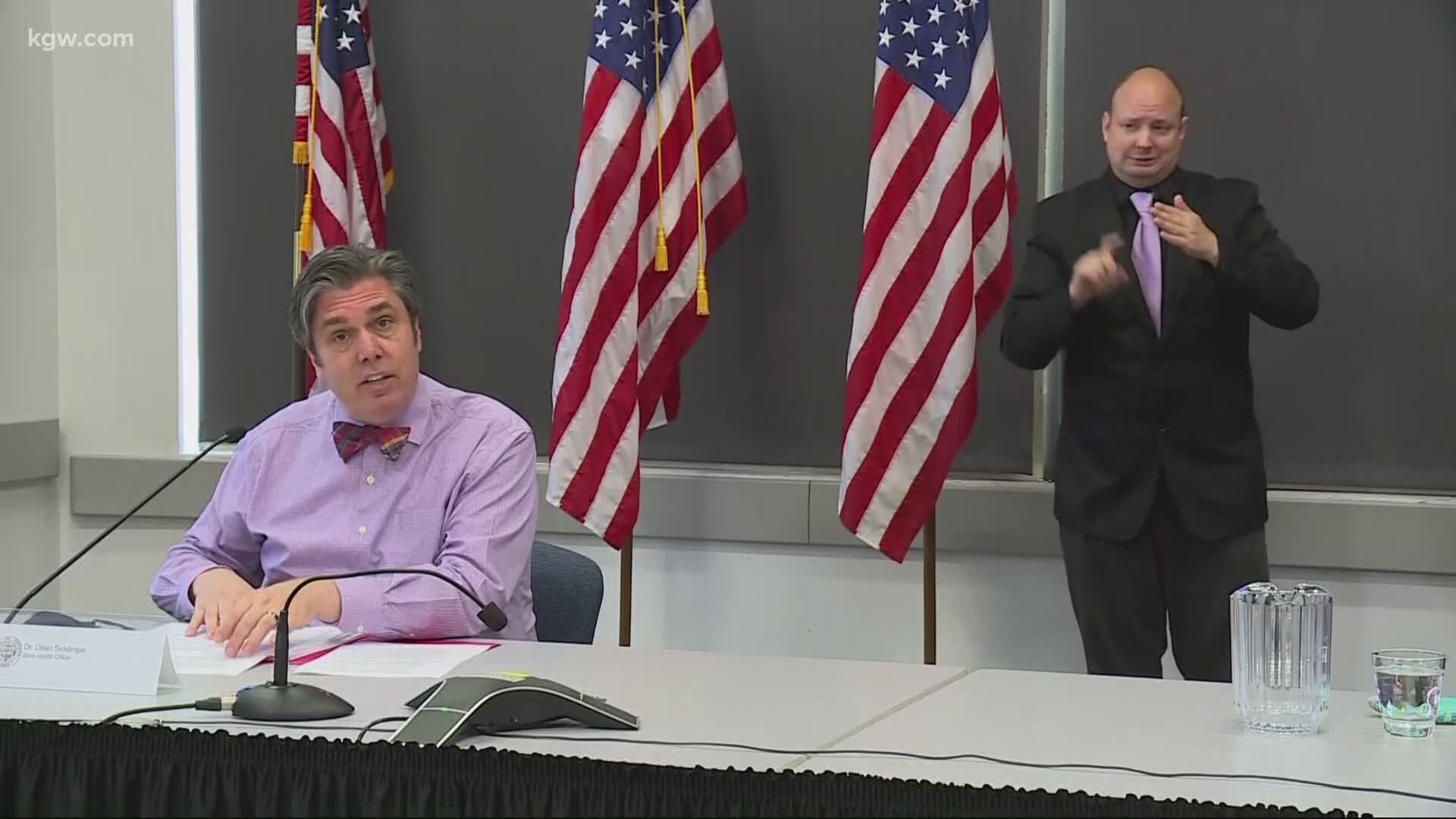PORTLAND, Oregon — Oregon Gov. Kate Brown released new guidelines for getting kids back in the classroom on Tuesday.
It's clear most students will start the year online – at least part of the time.
Last month, Gov. Brown thought schools might be able to pull off a partial re-open, so districts came up with plans over the summer. But Tuesday’s announcement shatters some of those plans, much to many people’s dismay.
“I want to be really clear that our highest priority is to open our schools to in-person instruction for our students,” Oregon Department of Education Director Colt Gill said. “And that they have the ability to do it as soon as we believe that they can provide safety and stability for our students, families and the staff at each of our schools.”
On Tuesday, the governor gave specific metrics counties have to meet before in-person or hybrid classes can start. A county can have just 10 new COVID-19 cases per 100,000 people per week for three straight weeks.
The COVID-19 positivity rate must also be under 5% in the county and the state for three weeks before students can return to in-person classes. The Oregon Health Authority on Monday reported the state’s positivity rate last week was 4.8%, the first time in a month the state’s weekly positive test rate was below 5%.
In Multnomah County, for example, that would mean a maximum of 81 cases per week, which doesn’t appear attainable any time soon; last week the county had 453 new cases.
As a result, Portland Public Schools notified parents they'll be online classes through at least November 5.
Other metro area schools are also starting online or even delaying the start of the school year.
School districts across Oregon have been developing their own plans to teach all students, including many who were disproportionately impacted by online learning last spring. The Oregon Department of Education provided some guidance with a broad Operational Blueprint for Reentry released on June 10 and updated on June 30.
There are some exceptions to the metrics and we’ve received plenty of questions from our viewers and followers about them on social media.
1. Where did these metrics come from?
The Oregon Health Authority, Department of Education and Early Learning Division worked together on them.
They're based on county and state COVID-19 case numbers and positive test rates. Dr. Dean Sidelinger also said Tuesday the state has looked to how other countries successfully reopened schools.
2. Does Multnomah County set the bar for the entire state?
No, it does not. The same metrics apply to pretty much every school district in Oregon but case counts look different in every county. Therefore, school reopening could vary across different districts – from urban to rural parts of the state.
3. Will schools close again if the positive test rate creeps up above 5%?
Where in-person classes have resumed, each district must start planning for a transition to comprehensive distance learning in the case of 20 or more COVID-19 cases per 100,000 for seven days or a test positivity of 7.5% or greater for seven days.
School districts must fully transition to remote classes if they see 30 or more cases per 100,000 for seven days or a positivity rate of 10% or greater for seven days.
4. What is the deal with the state’s K-3 exception?
Kindergartners through third graders can go back to school if the county they're in has less than 30 cases per 100,000 people over a seven-day span or the rate of positive tests is 5% or less over that same period.
"Here's why: our younger students get the virus at lower rates, they get less sick and are less likely to transmit the virus,” Oregon State Health Officer Dr. Dean Sidelinger said, “Younger students need access to in-person education to build the literacy and numeracy skills they need that are critical to continued learning.”
This exception also applies to small, rural, remote districts with less than 100 students and rural private schools.
If those criteria are met, the guidance also says based on the education department's Comprehensive Distance Learning guidance, limited on-site learning should be prioritized to meet the needs of specific groups including, but not limited to, students with disabilities.
However, COVID-19 cannot be actively spreading in the school community and districts that allow limited in-person instruction must be in compliance with sections 1-3 of ready schools, safe learners guidance
5. How can we find out if my county would meet that criteria to allow any in-person instruction?
School districts make those decisions, so families should be hearing from superintendents very soon.
You can usually track cases on your county's website or on the OHA COVID-19 Testing & Outcomes by County dashboard.
KGW is working to find out if any Oregon districts have plans to start school in-person.
6. Does this impact universities and colleges?
It doesn't. They set their own rules and many already have some sort of plan for online courses, in-person with social distancing or a mix of both.

